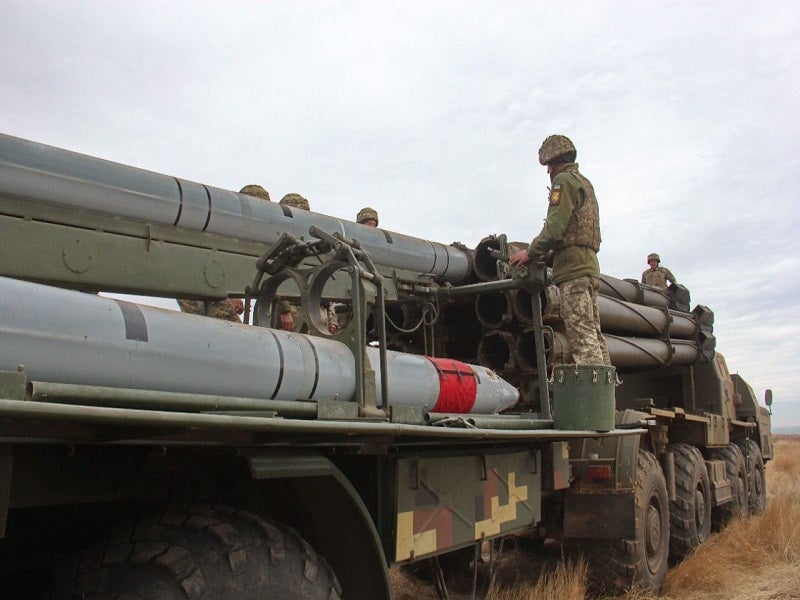Understand the impact of the Ukraine conflict from a cross-sector perspective with the Global Data Executive Briefing: Ukraine Conflict
Vilkha M is a new multiple launch rocket system (MLRS) developed by the State Kyiv Design Bureau “Luch” in collaboration with other public and private Ukrainian defence companies.
The MLRS can destroy infantry, armoured, and soft-skinned targets in concentration areas of artillery batteries, command posts, and ammunition depots. It is ten times more accurate than the ageing MLRS platforms in service with the Ukrainian Army.
The system will enable Ukraine to protect its borders, straits, and territorial waters, as well as its naval bases and coastal infrastructure within the missile launch range.
The multiple launch rocket system was test-fired several times in 2018, while the tests were also conducted at a military training ground in the Odesa region of Ukraine in August 2019.
The Ukrainian Army accepted the Vilkha M system in 2018, while the serial production of the missile complex began in 2019. The MLRS also received interest from multiple foreign customers. The first export contracts for the MLRS were announced in April 2021.
State tests of the Vilkha M system were conducted in October 2021. The trails evaluated the tactical and technical characteristics of missiles, guidance systems, and flight range.
Vilkha M MLRS design and features
Vilkha M system is based on the Soviet-era BM-30 Smerch heavy MLRS. Each system is manned by a crew of four and is capable of firing missiles in single or salvo modes.
The launch mass of each 300mm Vilkha missile is 800kg. The MLRS is capable of destroying the enemy targets located at a distance of 130km.
The system can fire 12 missiles in 45 seconds and engage the targets with a circular error probability (CEP) of less than 30m.
Fire control
Vilkha M features a new automated fire-control system, which can be operated in either auto or manual modes. The fire control system enables autonomous determination of an azimuth of the launch tube.
The laying of launch tube cluster, the path and location of the launch vehicle, as well as the point of destination and course of movement are visually presented in the form of graphics on the video terminal.
The new launch interface enhances the survivability of the Vilkha-M MLRS by reducing the time of remaining at a fire position.
The Vilkha M missile employs a GPS-free guidance system to avoid the risk of signal loss due to satellite-navigation jamming or deceiving attacks.
Powered by a solid motor, the rocket can be attached with different types of warheads. It also features an inertial correction system, which enables the angular stabilisation of the rocket during the boost and flight phases.
Vilkha M launch vehicle details
The multiple launch rocket system is based on the chassis of the KrAZ-7634 8×8 truck. The driver’s cab is mounted on the forward left section of the chassis. Positioned behind the driver’s cab, the launch cabin features the launch preparation and firing equipment and systems.
The rear section of the truck is mounted with two separate banks of four launch tubes with the remaining four tubes above and between the inner tubes of the two banks. The truck is also fitted with a pair of circular legs of stabilisation on either side of the chassis.
The gross weight of the truck is 32t, while its load-carrying capacity is 18.8t. Power comes from a YaMZ-7511.10 turbocharged diesel engine coupled to a nine-speed mechanical transmission system. The engine develops a maximum power output of 420hp and enables a maximum speed of 100km/h.
The conventional front suspension system of the truck integrates four semi-elliptic springs and four hydraulic shock absorbers, while the rear suspension includes an equalising beam and two semi-elliptic springs.
The maximum gradient and turning radius of the vehicle are 25% and 14m, respectively.




